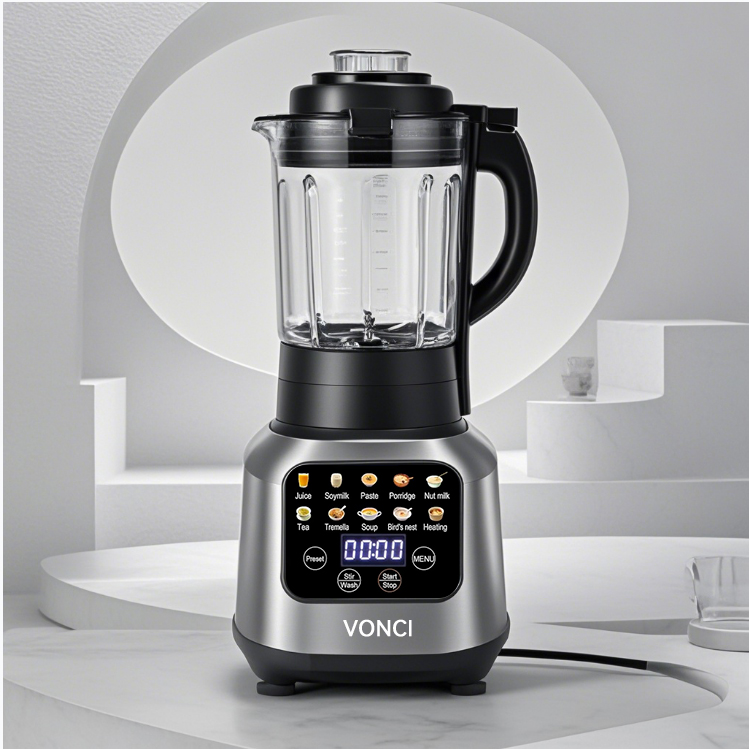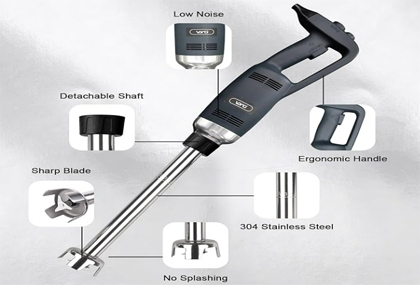Differences Between Blenders and Juicers with High-Speed Blades
Nov 21,2024
494
In the world of kitchen appliances, both blenders and juicers with high-speed blades are common tools used for processing food ingredients, yet there are numerous differences between them.

In terms of functional principles, a blender mainly cuts and stirs food ingredients through the high-speed rotation of its blades to make them mix evenly. For example, when making a simple fruit smoothie, a blender can quickly break up and mix the fruits and milk together to form a smooth drink. However, a juicer with high-speed blades takes it a step further based on the functions of a blender. It can not only cut and stir food ingredients but also break the cell walls of the ingredients by virtue of higher rotational speeds and stronger power. For instance, when making soybean milk, a juicer with high-speed blades can completely break the cell walls of soybeans, enabling the nutritional components such as proteins and vitamins to be released more fully. As a result, the soybean milk has a smoother and silkier texture, and its nutrients are more easily absorbed by the human body.
Regarding rotational speed and power, juicers with high-speed blades usually have a distinct advantage. Generally, the rotational speed of an ordinary blender is approximately between 10,000 and 20,000 revolutions per minute, and its power is relatively low. In contrast, the rotational speed of a juicer with high-speed blades can often reach 20,000 to 40,000 revolutions per minute or even higher, and it also has greater power. This enables a juicer with high-speed blades to perform excellently when dealing with relatively hard food ingredients like nuts and ice cubes. For example, when making nut butter, a juicer with high-speed blades can easily grind the nuts into a fine paste. However, a blender might struggle and find it difficult to achieve such a fine texture. There may even be situations where the mixing is uneven and some particles remain.
From the perspective of usage scenarios, blenders are suitable for some simple tasks such as mixing food ingredients and performing preliminary crushing, like making vegetable salad dressings, fruit purees and other daily simple dishes. They are relatively easy to operate and more affordable in price, and can better meet the basic kitchen needs of ordinary families. Due to their powerful functions, juicers with high-speed blades are more suitable for making nutrient-rich drinks or foods that require a high degree of fineness of the ingredients, such as healthy five-grain rice paste and full-nutrition fruit and vegetable juices. They are more widely used in families that focus on healthy diets and pursue high-quality food preparation, as well as in professional beverage shops and restaurants.
In terms of price, there is also a significant difference between the two. Ordinary blenders are relatively inexpensive, usually ranging from dozens to hundreds of yuan, and can meet the basic consumption needs of the general public. Juicers with high-speed blades, on the other hand, usually cost between several hundred and several thousand yuan due to their more advanced technology and more powerful functions. Some high-end models are even more expensive.
To sum up, although both blenders and juicers with high-speed blades have the function of stirring food ingredients, there are obvious differences in functional principles, rotational speed and power, usage scenarios, and price. When making a choice, consumers can decide whether to choose a relatively basic blender or a powerful juicer with high-speed blades according to their actual needs, budgets, and expectations for the food processing results, so as to better play their roles in the kitchen and add convenience and creativity to food preparation.





